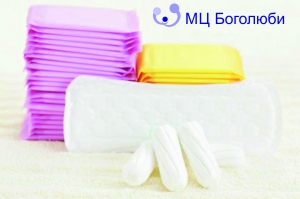One of the most commonly used hygiene products during menstruation are tampons. However, although they are very comfortable, they can cause discomfort or pain for some women.The causes of this depend on various factors, in the event of which it is necessary to contact a gynecologist. If you had to face a similar problem, you can contact the specialists of the Bogolyuby Medical Center for a consultation , and until the visit to the doctor, it is better to use external absorbents such as pads.
The most common causes of pain and discomfort during tampon insertion are:
• dryness of the vagina;
• vaginismus;
• vulvodynia ;
• vaginal cysts;
• endometriosis .
Let's take a closer look at each of them.
Vaginal dryness
Due to this condition, the friction of the tampon against the walls of the vagina during insertion and removal often leads to discomfort. Although the purpose of this hygiene product is to absorb blood during menstruation, it can also trap moisture in the vagina and increase dryness. If you do not want to use pads instead of tampons to improve the situation, then you can lubricate the applicator with a small amount of intimate lubricant . However, if vaginal dryness persists for more than a few days or becomes chronic, then it may be the result of stress, hormonal changes, or certain medications, all of which should be discussed with a gynecologist.
vaginismus
In vaginismus, the vagina involuntarily contracts when something foreign, in this case a tampon, is inserted, which causes pain. The nature of this disorder is not yet fully understood. If you suspect that you are suffering from vaginismus, it is important to discuss this with your doctor in order to find the most appropriate therapy aimed at eliminating the causes, which can be both physical and psychological in nature: trauma, anxiety, fear.
Vulvodynia
A burning sensation when inserting a tampon may be a symptom of vulvodynia . This condition is characterized by chronic pain in the vulva. Its causes are still not well known, including because the symptoms are extremely variable. In fact, the pain can be intermittent or constant, generalized or localized in a specific area, such as the vagina. Vulvodynia is treated with steroid medications, tricyclic antidepressants, anticonvulsants, local anesthetics, and nerve block injections, which can help relieve pain.
Vaginal cysts
The presence of a vaginal cyst can also be a source of pain when inserting a tampon. The most common types of cysts usually form due to trauma during childbirth or after surgery. They may be filled with air, fluid, pus, or other material. Although cysts usually do not cause symptoms, they can become painful if they become very large, become inflamed, and block the entrance to the vagina. (This is what makes inserting a tampon uncomfortable or painful.)
If you have a vaginal cyst, our specialist will determine during a consultation whether it should be removed. In such cases, it is advisable to forego tampons and use sanitary napkins until the cyst has healed properly.
Endometriosis is a disease in which endometrial cells grow outside the uterus, causing inflammation, swelling, and scarring, especially during menstruation. It is estimated that 2 to 10% of women of childbearing age suffer from it, and among the symptoms that characterize it, there is also pain during the insertion of tampons and during intercourse. The other most common signs are: severe abdominal or lower back cramps and heavy menstrual flow; painful urination during menstruation; gastrointestinal problems such as diarrhea, constipation, nausea, infertility.
Treatment of the disease depends on its stage and severity. Pain medications, such as non-steroidal anti-inflammatory drugs or other over-the-counter pain medications, or hormone therapy to relieve symptoms are prescribed. In severe cases, surgery may be required to surgically remove endometrial tissue.


















